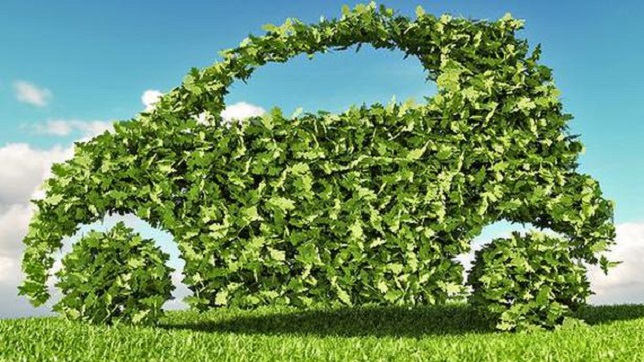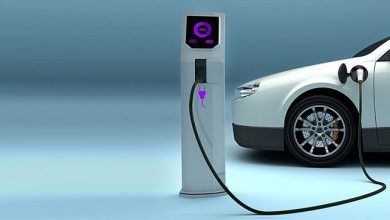Clean and Sustainable Mobility in India

Clean Mobility is a global need, particularly for India which is dealing with high pollution level. India has committed to reduce its total projected carbon emission by one billion tonnes by the year 2030. As a measure to achieve this, India is working towards building non-fossil energy capacity of additional 500 gigawatts by the year 2030. The current available energy resources are mostly consumed by the Mobility users, like, vehicles on road, railways and agricultural equipment. This article discusses the present scenario in India and suggests an approach to achieve Clean and Sustainable Mobility.
Clean Energy in Mobility
Vehicles running on Petrol and Diesel are large contributors to pollution and it is important to note that vehicular pollution has high concentration in metros and cities. On the face of it, Electric Vehicles are seen as a solution to reduce this pollution as they by themselves are non-polluting. The focus of Government of India and several State Governments on increasing the use of Electric Vehicles is a step in the right direction. But the moot question is whether Electric Vehicle, in its present form, are a pure clean energy solution in India? The answer is in the negative because of the battery being used and the way they are being charged. Majority of Electric Vehicles in India still use lead acid batteries. Lead is a carcinogenic and toxic substance and the acid in the battery emits dangerous fumes. It is satisfying to note that Lithium Batteries are now gaining popularity which overcome these shortcomings of lead acid batteries. Here, it is highly important to increase the safety features in Lithium Batteries. However, be it lead acid or lithium battery they are both being charged using electricity supplied by the Grid. The Electricity Grid in India has Thermal Power as its predominant power source. Thermal power plants burn coal in huge quantity and are one of the biggest contributors of pollution. Energy & Mobility Analysts and the EV industry predict an exponential growth in use of EVs in India over the next decade. This will lead to increase in demand for additional energy resource. Unless there is a concentrated strategy to meet this new exponentially increasing demand for electricity from Renewable Energy resources, the net result may be further increase in fossil-based power plants. It is feared that this may result in further increase in pollution. So, at present E-mobility is not clean and its need of the hour to devise strategy for Clean and Sustainable Mobility.
Present Power Generation Scenario and Strategy for Future
The following table summarizes the present installed capacity of various sources as of 2021-22:
| Fuel Type | Capacity (MW) | % to total |
| Hydro | 51,301 | 10.7% |
| Coal + Lignite | 2,17,302 | 45.3% |
| Gas | 25,735 | 5.4% |
| Nuclear | 10,080 | 2.1% |
| Total Conventional Capacity | 3,04,419 | 63.5% |
| Total Renewable Capacity | 1,75,000 | 36.5% |
| Total Capacity by 2021-22 | 4,79,418 | 100.0% |
The total renewable energy resource in India is targeted to be 36.5% of the total energy resource by end of 2022. However, wind and solar being the main renewable energy resources the resultant power generation from renewable resources is fluctuating. Solar Power is available during sunlight and wind energy is dependent on wind pattern. Due to this erratic and fluctuating power generation from renewable resources, it is a technical and economic challenge to integrate these in the National grid. This calls for a multi-pronged approach some of which are highlighted here:
- Storage of power generated from Renewable resources using batteries (Energy Storage System ESS).
- Use of Hydropower plants as a balancing generation resource as they can be started and stopped in very less time,
- Use of hydroelectricity for pumped storage i.e., use excess power generated during day time from solar power farms to pump available water to a storage and use this stored water during supply shortfall to produce hydroelectricity.
- Time and tariff-based management of demand.
The strategy at the macro level has to actively promote battery storage of solar and wind power generation with integrated battery storage units. This calls for heavy initial investment but the gains of increasing reach of clean energy outweighs the initial cost. Non-toxic batteries like lithium batteries, sodium batteries and others should be promoted to make energy storage clean. The cost per MW of battery storage would drastically come down as it reaches economies of scale as it happened in the case of Solar PV cells. India has abundant untapped hydro-power which can be harnessed judiciously giving due consideration to any environmental imbalance being created. Hydropower generation is apt for use as a balancing source to take care of fluctuations in renewable power generation. Pumped hydropower generation also achieves this objective. The demand for electricity increases substantially in evening and by encouraging the movement of some of this demand to day time when renewable energy is available would further increase the proportion of clean energy in the energy basket in India. This can be possibly achieved by reducing tariff during day time and increasing tariff during morning and evening. Charging of batteries for Electric vehicles during daytime should be encouraged so that the increased demand on account of EV charging is met by renewable resources at the macro level. This calls for creating EV charging infrastructure in work places, commercial and industrial establishments. Multi-pronged strategy is needed to achieve the goal of Clean Energy for the country in general and E-Mobility in particular. The following section dwells on Sustainable Mobility in India.
Present Status – Electric Vehicles a drop in Ocean of Mobility
As of year 2019, India had 295.77 million vehicles on road with an average growth rate of 9.4% p.a. In comparison the total Electric Vehicles registered in India in 2020-21 was a mere 1,04,806 vehicles (source: published data available on web). Low speed electric two wheelers and three wheelers (L2 category) do not require registration. Arguably, due to relative low cost of such electric vehicles they would have sold in much higher numbers. To build a case if it is assumed that registered vehicle comprised only 10% of total electric vehicles sold in 2020-21, the total number of electric vehicles sold in 2020-21 can be pegged at 1 million electric vehicles. In the same year 2020-21, 26.27 million vehicles were registered in India, thus EV sales were mere 3.80% of total sales. Again, considering 10% annual growth rate in new vehicles, there would be approximately 525 million vehicles on road in India by the year 2025. Considering that sale of EV is growing exponentially, say at annual growth rate of 100% per annum, there would be approximately 65 million electric vehicles on road by 2025. This implies that even at an optimistic rate of 100% growth every year EV would comprise only 12.38% of total vehicles by 2025. So it can be said that 82% of vehicles on road by the year 2025 would be directly contributing in further increasing pollution. This points to an alarming situation and it can also be inferred that new Electric Vehicles alone may not be able to achieve the goal of sustainable clean mobility. The following section discusses steps to achieve sustainable clean mobility.
Focus on Hybrid – Convert IC engine Vehicles to Electric Hybrid
The easiest and fastest way to achieve sustainable clean mobility is to promote hybrid vehicles. The 300 million vehicles on road cannot be taken off road suddenly as it would bring an economic catastrophe. Replacing these vehicles by electric vehicles is not feasible rather it is feared that the gap may widen further. The quick and sustainable solution is EV conversion and government needs to prioritize and incentivize this. This would have an immediate effect on reducing oil imports and pollution and increasing clean energy vehicles in the basket. Hybrid EV conversion also effectively addresses the main barrier of “range anxiety” in fast adoption of Electric Vehicles. The user remains worried that he/she may get stranded when the battery gets fully discharged. Wide spread network of charging stations and battery swapping stations can address this range anxiety considerably but a hybrid vehicle addresses this most aptly. The user can have smaller sized battery sufficient enough to take care of his daily routine drive, thereby reducing his/her upfront cost. The user will have existing IC engine option to fall back to, when the battery gets discharged or he/she has to once in a while drive the vehicle unusually more than his/her routine daily ride. EV conversion kits – hybrid or complete electric are today available at less than Fifty Thousand Rupees for two Wheelers, Eighty Thousand Rupees for three wheelers and Two Lakh Rupees for four wheelers including a Lithium Battery capable of running for approximately forty kilometres in a single charge. However, Central and State Governments need to urgently frame guidelines to ensure standardization, quality and safety. Government Incentives for EV conversion would lead to fast adoption and help in progressing towards the goal of clean and sustainable mobility.
The following table gives a snapshot of vehicles sold in India in the year 2020-21:
| Vehicle Type | Number of vehicles sold |
| Passenger Vehicles | 3.38 million |
| Commercial Vehicles | 1.01 million |
| 3 wheelers | 0.7 million |
| 2 wheelers | 21.18 million |
From the above data it is clear that emphasis needs to be built on conversion of two wheelers running on petrol. In addition, conversion of 3 wheelers and small cargo trucks to electric (hybrid or fully electric) brings in lot of economic sense as the decrease in per km cost of running the vehicles often leads to a pay-back period of less than 2 years.
Large Scale production of EV components in India
It is ironical to note that India is far lagging in production of EV components in India. The industry is still largely importing EV components, CKD kits and EV from China. China continues to be the dominant source of lithium cells. Sustainable E Mobility can be achieved only when India is self-reliant on all components of Electric Vehicle. The need of the hour is that governments in India prioritize this and promote setting up for large scale indigenous factories to produce EV components like motor, controller, harness, BMS, GPS and other electronics and also the lithium cells. The assembly of EV and batteries for EV may continue in MSME sector and governments may nurture them by providing funds and tax incentives. Standardization and Quality are must for sustainable development in this respect.
Battery Swapping and Charging Infrastructure
Two big impediments in the growth of Electric Vehicles sector (converted vehicle or fully electric) are high cost of battery and range anxiety. Battery Swapping addresses both these concerns to a large extent. Battery Swapping introduces battery as a service. The battery swapping model envisages battery swapping operators who own the batteries and swap discharged battery with charged battery on payment of small usage charges. This decouples the battery cost from the vehicle cost and thus makes the vehicle almost 40% cheaper and hence more affordable. With the operator having a network of swap centres in its area of operation and using GPS, Cloud Services and Mobile App the customer is freed from range anxiety as well. Swapping is at a nascent stage in India but is bound to grow exponentially and it needs a start push from Government or Large Corporates. The Swapping Operator can charge the batteries at a dedicated solar or wind energy farm thus making it a completely clean solution. In the same way, solar and wind energy farms can be roped in as EV charging infrastructure. This would help in realizing the goal of clean and sustainable mobility.
Railways and Rural Mobility
Historically, Indian Railways used to run on steam by burning coal and then moved on to diesel locomotives. Now, Indian Railways is electrifying the routes and already consumes more than 20 billion units (kWh) of power every year. Indian Railways has electrified about 35% of its route and with ongoing electrification the electricity requirement of Indian Railways is set to further increase. Most of this electricity again comes from Thermal Power Plants. Indian Railways having vast track of land under its control must look at installing captive solar farms to partially meet its energy requirements. Solar panels coupled with battery storage can also be installed on passenger / cargo bogeys to take care of lighting needs. This would be a leap forward towards achieving clean and sustainable mobility. Rural Mobility revolves around tractors and trolleys which are also used for farming by attaching far equipment. These are all predominantly users of diesel. With availability of land not being a constraint in rural India, focus should be on developing stand alone isolated solar farms with battery storage to meet the energy requirements of the locality. Hybrid Tractors (by adding EV option to existing tractors) can also play a significant role in achieving clean and sustainable mobility.
Standardization – Need of the Hour
The IC engine vehicle industry is now more than a century old. There is enough standardization in design and components. The quality standard is generally high. The EV industry in India is in its early stage and is largely dependent on imports. For the EV industry to be sustainable in future, it is important to bring in standardization and quality standards. The existing government policies need an overhaul with focus on quality and safety. Standardization would also help in fast adoption of Battery Swapping and EV conversion. This in turn would lead to Clean and Sustainable Mobility.
Conclusion
At present, mobility be it IC or Electric is not fully clean in India and is not sustainable in future. Immediate steps need to be taken in increasing the share of renewable resources in our energy basket and its fair utilization by adding adequate storage of renewable power produced. Focus should be on converting existing IC vehicles and ideally making them hybrid. Battery Swapping also needs to be institutionalized and promoted to make EVs more affordable and desirable. Captive Solar Farms for Railways and Rural India is the need of the hour. All these measures would enable India in moving towards Clean and Sustainable Mobility. In this way India can also achieve its target of reducing carbon emission and reducing pollution by the year 2030.
Author:

R V Ranjan
DIRECTOR & CEO
Ranjans Li-on Energy Private Limited
R V Ranjan is Director & CEO of Ranjans Li-on Energy Private Limited, Pune, India. Team Ranjans provides complete energy solutions with innovative & customized SMART, SAFE & SURE Lithium Batteries for E Mobility and ESS. Mr. Ranjan, Gold Medallist in his Graduation & MBA, MS from Manchester University, has 25+ years of experience in Investment Banking, Project Finance & Top Management Roles.
Published in Telematics Wire





